Eye On The Prize: Romera's Cerebral Cortex
In our ongoing coverage of this year's design nominees for the James Beard Awards, we talked with the architect Glen Coben about Romera, a New York eatery that earned as much ink for its interior design as it did for its ambitious, widely-questioned tasting menu.
Helmed by Miguel Sánchez Romera, a neurologist-turned-chef whose Barcelona restaurant L'Esguard holds one Michelin star, Romera opened this fall in the Meatpacking District's Dream Downtown Hotel. The curiously light-filled space (especially given its subterranean location), found a balance between the playful and cerebral, pairing medical objects with industrial elements, and clear crystalline accents with an on-site library containing books on neuroscience, gastronomy and art.
Unfortunately, Romera shuttered this spring, making Coben's nomination for Oustanding Restaurant Design a bittersweet one. The restaurant may no longer exist, but clearly his work left a lasting impression. Read what Coben has to say about it below.
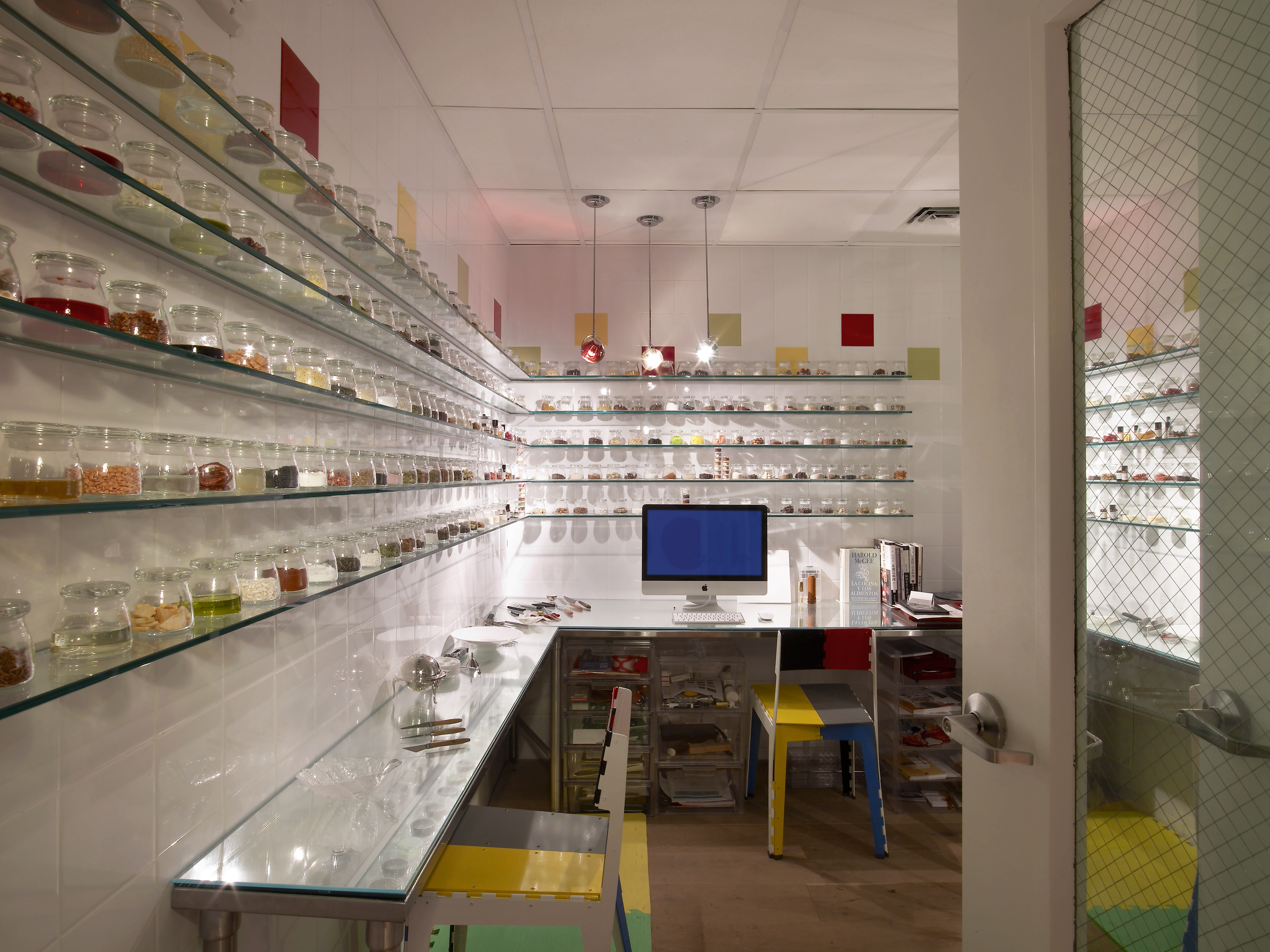
The "Doctor's Office"
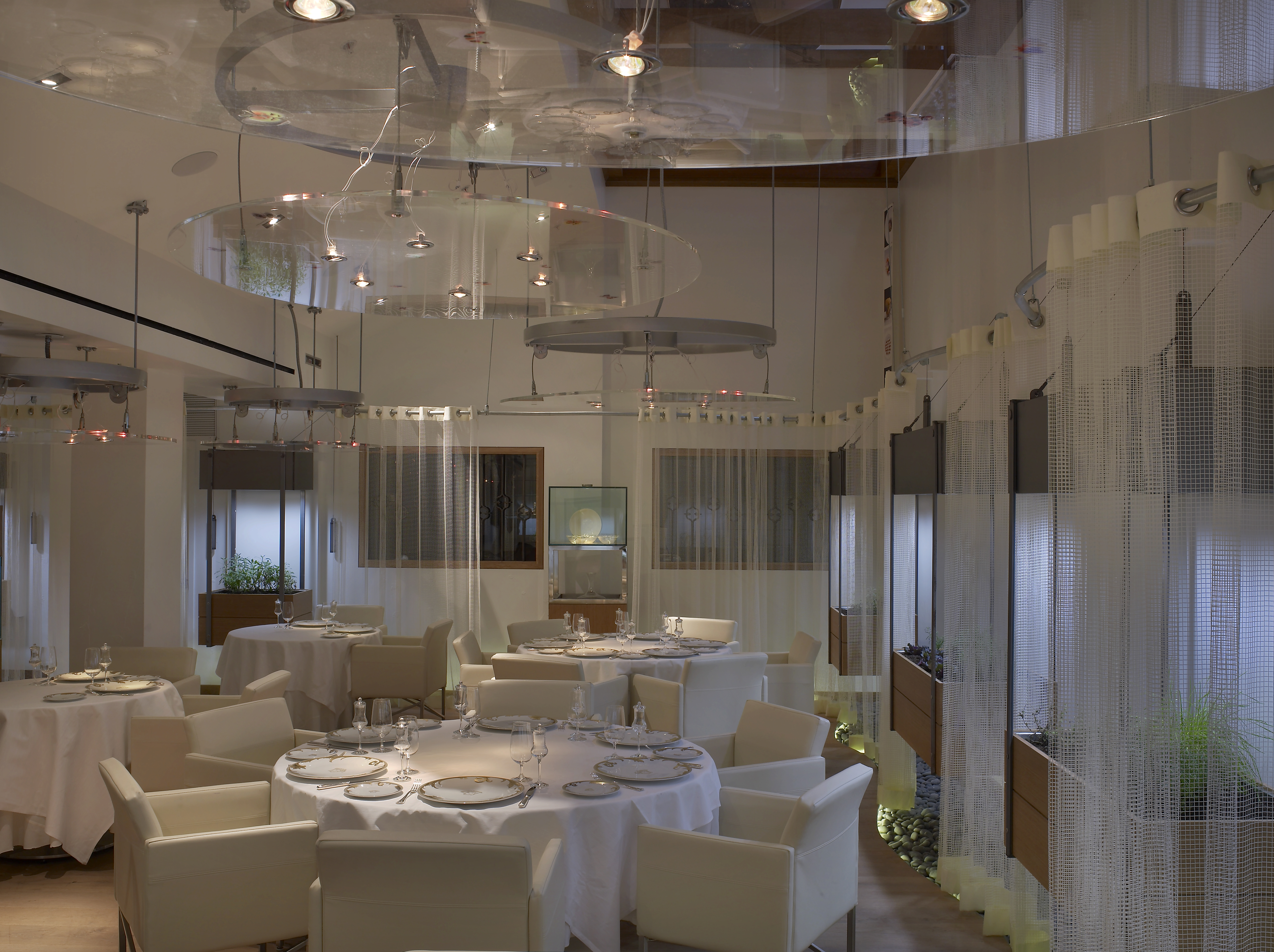
Romera's dining room, deliberately devoid of color in order to highlight chef Romera's food.
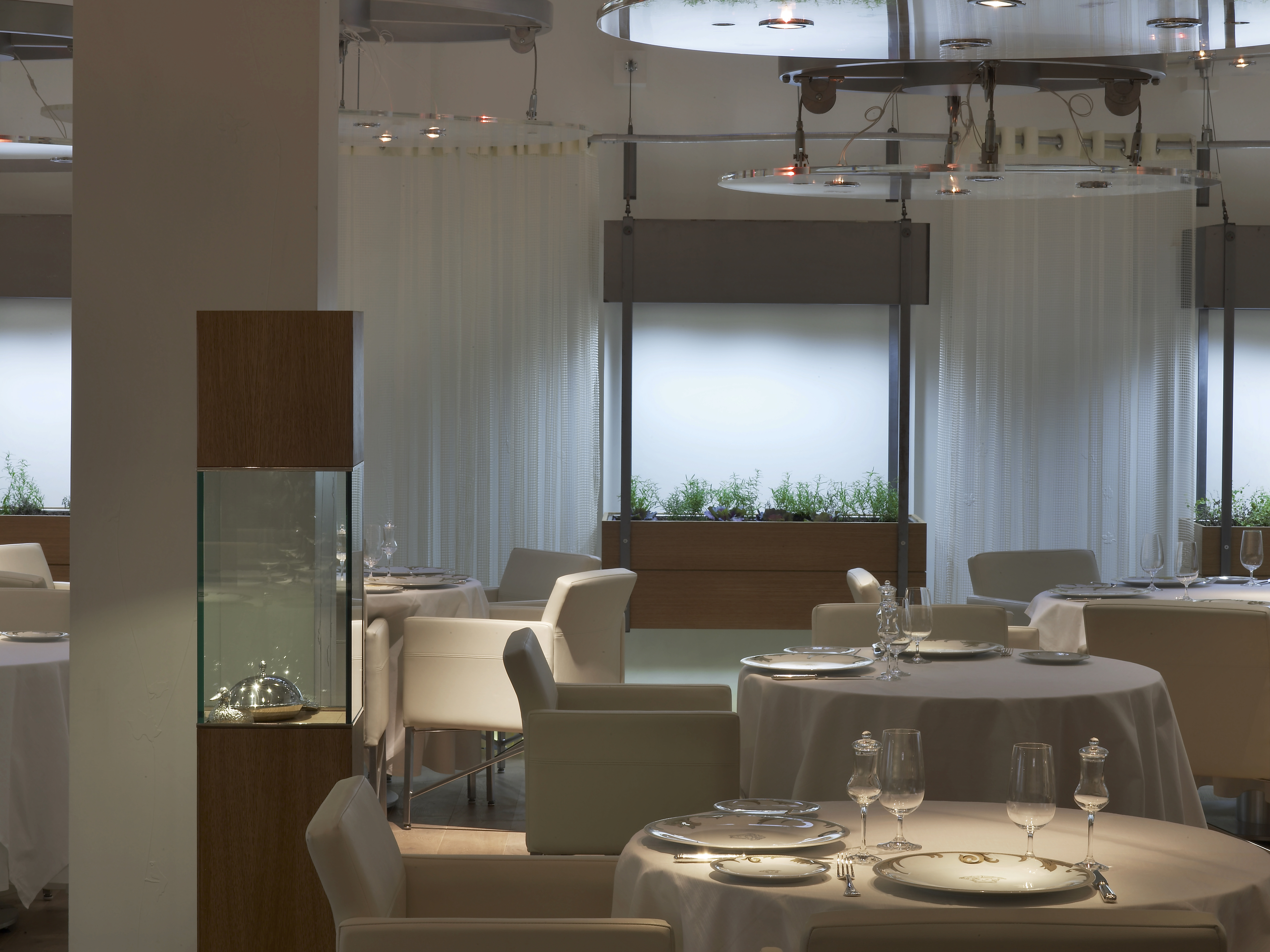
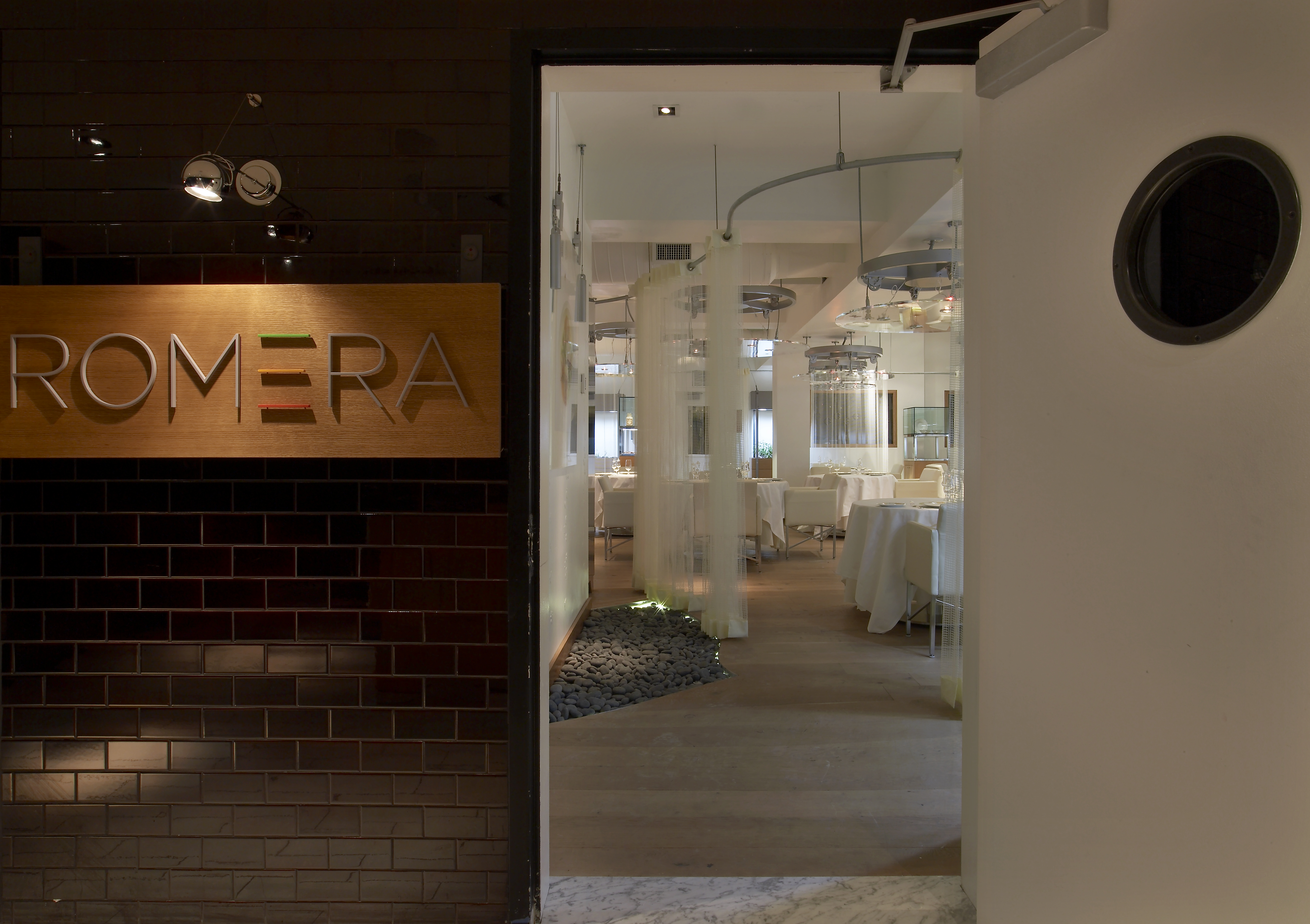
The restaurant's entrance, located in the basement space of the Dream Downtown Hotel.
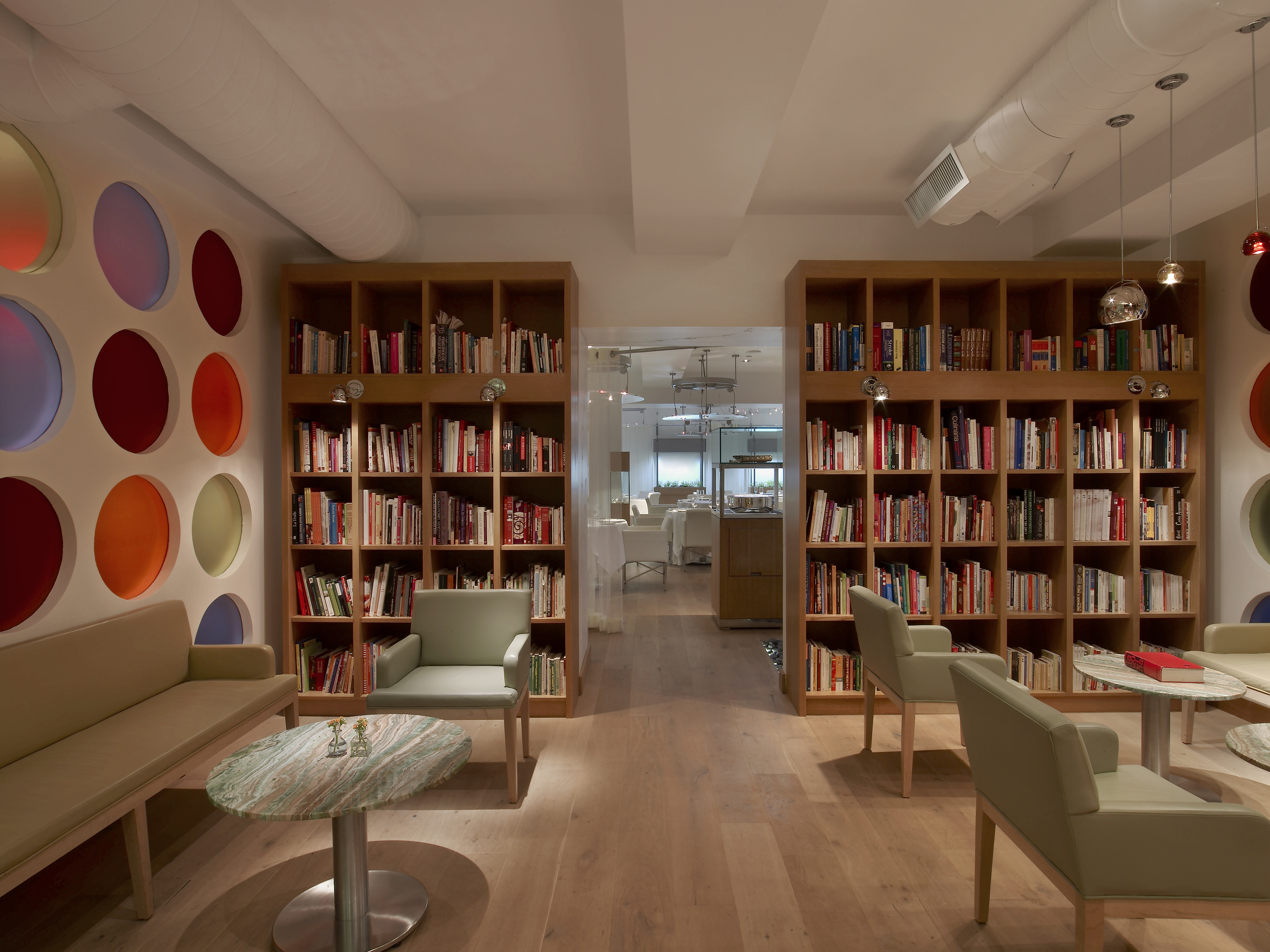
The library, containing a mishmash of books from Dr. Romera's personal collection. (All photos by Eric Laignel)
When you're about to embark on any restaurant design project, what is the first thing you ask yourself or consider?
As storytellers, we are always searching for background—background into the chef, the cuisine, menu, the chef's inspiration, history. That of course is after I ask myself, "Why do I want to do this again!" Seriously, I love designing restaurants because they are so personal to the chef or restaurateur. I love hearing their background, influences and what inspires them.
What were Dr. Romera's directions for this particular restaurant? What did he say he wanted to achieve?
I spent time in New York and in Barcelona with Miguel. His English wasn't great, and my Spanish was rusty, so we had to be really creative in how we communicated. I sketched, and he pointed to things. We walked through the Bouqueria. I shadowed him in his kitchen at L'Esguard. I dined with him in many places. The more time we spent together, the better I understood his vision: place that would transport guests to a place that allowed them to focus on his craft. The vision did not change, even through the recession when the project went on a bit of hold.
The stark white space and its clear elements seems like a rather substantial departure from your past projects.
I like to say that we don't have a "house style" and that each project is unique. That being said, this project was devoid of color except for a few accents so the food could be the real show. We created a neutral backdrop, much like a wonderful gallery doesn't want to compete with the artwork.
How did Romera's subterranean location in the Dream Hotel influence its design?
When first presented with the idea of a basement, I was concerned that it would be a tough hurdle to get over. Ultimately, I believe working in the lower level forced us to concentrate on transporting the guest to another "place." Although the critics weren't kind to Dr. Romera, it was in Pete Wells' review where he noted that it was one of the finest restaurants that he seen in a basement. We took the opposite approach of dark and sexy and cozy...we went light and airy.
Can you explain the lever and weights component throughout the space?
We wanted to create moments of interest in the space. Originally, I envisioned the custom light canopies over each table could be raised and lowered depending on the number of people at the table. The pulleys and counterweights were part of that language, and remained a part of the look—something we referred to as "industrial chic."
Were there any major design challenges you faced?
The biggest challenge for the design team was the fact that we were in the basement of a hotel. There were steel beams that needed to be penetrated for ductwork, and other physical hurdles that we overcame. Chef Romera had far more challenges in front of him, and sadly the food world did not embrace his cuisine. It is bittersweet that the restaurant closed. Dr. Romera is a wonderful man, a man of integrity, honor and more humble than any chef I have ever worked for. I am honored to call him "mi amigo."
Read more about the design nominees for the 2012 James Beard Awards:

